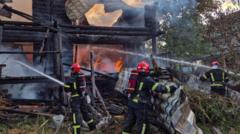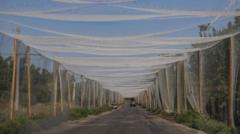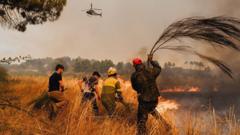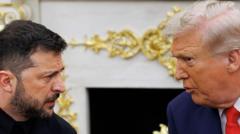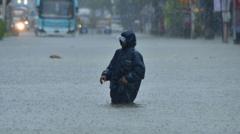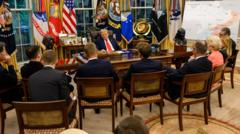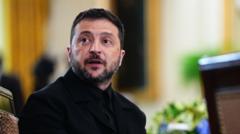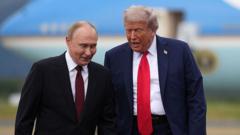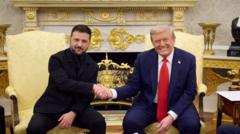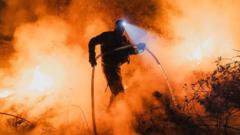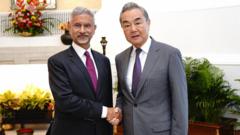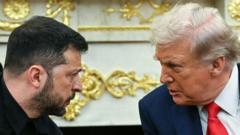Reports suggest that Moscow may be aiming to establish "buffer zones," prompting concern over potential shifts in the conflict's dynamics.
**Russia's Increased Military Presence in Sumy: Seeking a Buffer Zone?**
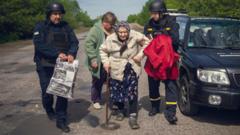
**Russia's Increased Military Presence in Sumy: Seeking a Buffer Zone?**
As Russian forces gain ground in Ukraine's Sumy region, experts speculate on their strategic intentions behind these advances.
The situation in Ukraine's northeastern Sumy region is escalating as Russian forces are reportedly advancing, with implications suggesting Moscow aims to establish "buffer zones" along its borders. Oleh Hryhorov, head of the Sumy region, indicated that Russian troops have captured four villages and are engaged in continuous fighting. The intent appears to be creating a buffer to support Russian borders adjoining Ukraine's Kharkiv, Sumy, and Chernihiv regions, as articulated by President Vladimir Putin in a recent announcement.
Hryhorov shared on social media that the ongoing offensive primarily targets the villages of Novenke, Basivka, Veselivka, and Zhuravka—all now occupied by Russian forces, who claim to have taken hold of six villages in total. However, Ukrainian officials have not formally acknowledged this territorial shift. Instead, military briefings have generalized the situation without providing specific details about the Sumy region, hinting at the extraordinary sensitivity surrounding these developments.
In contrast, President Volodymyr Zelensky's recent address underscored the urgency of countering Russian "preparations for new offensives," interpreted as a reference to the ongoing situation in Sumy. Observers have noted that Deep State, which closely tracks the battlefield, confirmed control of four Ukrainian villages by Russian forces even prior to Hryhorov’s announcement, suggesting a slow, methodical Russian advance over the past months, now bolstered by shifted troop deployments from Donbas.
Colonel Vadym Mysnyk outlined Russian strategies on the battlefield, revealing a preference for mobility utilizing small units on motorcycles to evade aerial observations by drones. This method of attack, paired with Russian aerial bombardments and artillery shelling on civilian neighborhoods, including recent strikes resulting in civilian casualties, has exacerbated tensions and prompted mass evacuations from adjacent settlements.
Retired Colonel Serhiy Grabskiy conveyed that the initiatives in the Sumy region seem to align with a broader Russian strategy to exert pressure, thus stretching Ukrainian resources thin across multiple fronts. The US-based Institute for the Study of War also posited that successful territorial acquisitions could influence future peace negotiations favorably for the Kremlin.
Still, most experts agree that there's no extreme immediate risk of a significant breakthrough in Sumy. Analysis from Deep State indicates a stabilization of the frontline, gesturing towards the resilience of Ukrainian defenses better prepared than during the onset of the conflict. However, should Moscow redirect its military priorities or deploy additional forces, the precarious situation might turn more volatile.
Hryhorov shared on social media that the ongoing offensive primarily targets the villages of Novenke, Basivka, Veselivka, and Zhuravka—all now occupied by Russian forces, who claim to have taken hold of six villages in total. However, Ukrainian officials have not formally acknowledged this territorial shift. Instead, military briefings have generalized the situation without providing specific details about the Sumy region, hinting at the extraordinary sensitivity surrounding these developments.
In contrast, President Volodymyr Zelensky's recent address underscored the urgency of countering Russian "preparations for new offensives," interpreted as a reference to the ongoing situation in Sumy. Observers have noted that Deep State, which closely tracks the battlefield, confirmed control of four Ukrainian villages by Russian forces even prior to Hryhorov’s announcement, suggesting a slow, methodical Russian advance over the past months, now bolstered by shifted troop deployments from Donbas.
Colonel Vadym Mysnyk outlined Russian strategies on the battlefield, revealing a preference for mobility utilizing small units on motorcycles to evade aerial observations by drones. This method of attack, paired with Russian aerial bombardments and artillery shelling on civilian neighborhoods, including recent strikes resulting in civilian casualties, has exacerbated tensions and prompted mass evacuations from adjacent settlements.
Retired Colonel Serhiy Grabskiy conveyed that the initiatives in the Sumy region seem to align with a broader Russian strategy to exert pressure, thus stretching Ukrainian resources thin across multiple fronts. The US-based Institute for the Study of War also posited that successful territorial acquisitions could influence future peace negotiations favorably for the Kremlin.
Still, most experts agree that there's no extreme immediate risk of a significant breakthrough in Sumy. Analysis from Deep State indicates a stabilization of the frontline, gesturing towards the resilience of Ukrainian defenses better prepared than during the onset of the conflict. However, should Moscow redirect its military priorities or deploy additional forces, the precarious situation might turn more volatile.


